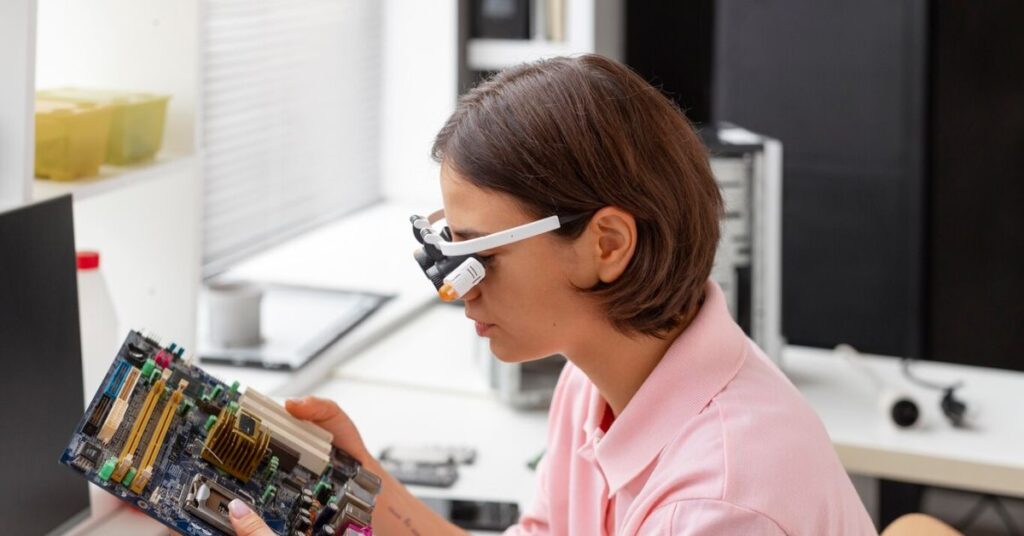The integration of Artificial Intelligence (AI) and the Internet of Things (IoT) is transforming the PCB manufacturing industry, making processes more efficient, precise, and data-driven. A leading PCB manufacturer utilizes these technologies to enhance production, optimize quality control, and improve supply chain management. This article explores the impact of AI and IoT in PCB manufacturing and how they are shaping the future of electronics production.
1. The Role of AI in PCB Manufacturing
AI is being increasingly used in PCB manufacturing to streamline design, automate processes, and improve quality control. With machine learning and advanced algorithms, AI provides predictive analytics and real-time decision-making capabilities that significantly enhance efficiency.
AI in PCB Design and Layout Optimization
AI-driven software assists engineers in designing PCBs by analyzing complex circuit layouts and optimizing designs for performance and manufacturability. Key benefits include:
- Automated Design Rule Checks (DRC): AI ensures that PCB designs comply with industry standards and manufacturing constraints.
- Component Placement Optimization: AI algorithms help in arranging components to reduce signal interference and improve performance.
- Thermal Analysis: AI simulations predict heat dissipation patterns, allowing for better thermal management in PCBs.
AI in Quality Control and Defect Detection
AI-powered inspection systems have revolutionized quality control by enhancing defect detection accuracy and minimizing human error. Technologies used include:
- Automated Optical Inspection (AOI): AI-driven AOI systems detect soldering defects, misalignments, and missing components with high precision.
- Machine Learning-Based Predictive Maintenance: AI analyzes machine data to predict potential failures and schedule maintenance before issues arise.
- Defect Pattern Recognition: AI recognizes recurring defects and suggests corrective actions, improving overall production quality.
2. The Role of IoT in PCB Manufacturing
IoT-enabled devices and sensors play a crucial role in monitoring and optimizing manufacturing processes. These smart devices collect real-time data and enable remote access to production parameters, enhancing efficiency and reducing downtime.
IoT in Process Automation
IoT technology automates various stages of PCB manufacturing, including:
- Real-Time Equipment Monitoring: Sensors collect performance data from manufacturing machines, allowing operators to identify inefficiencies and prevent breakdowns.
- Smart Material Management: IoT systems track raw material usage and automatically reorder supplies when stock levels are low.
- Production Line Optimization: IoT-enabled machines communicate with each other to synchronize production processes and minimize delays.
IoT in Supply Chain and Logistics
IoT enhances supply chain management by providing real-time insights into inventory, shipment tracking, and demand forecasting. Key applications include:
- Smart Warehousing: RFID and IoT sensors track PCB components in real time, reducing inventory errors and improving order fulfillment.
- Automated Logistics Tracking: IoT devices monitor shipments, ensuring timely delivery and reducing transportation risks.
- Demand Prediction: AI and IoT together analyze market trends to forecast demand and adjust production schedules accordingly.
3. Benefits of AI and IoT in PCB Manufacturing
The integration of AI and IoT offers numerous advantages, including:
- Enhanced Precision: AI-powered tools minimize human errors and improve design accuracy.
- Reduced Production Costs: Predictive maintenance and automated quality checks lower manufacturing expenses.
- Increased Efficiency: Smart automation accelerates production cycles and reduces downtime.
- Sustainability Improvements: IoT-based energy management optimizes power consumption, reducing environmental impact.
- Real-Time Decision Making: AI-driven data analytics enable manufacturers to make informed decisions instantly.
4. Challenges and Future Trends
Despite the numerous benefits, implementing AI and IoT in PCB manufacturing comes with challenges such as:
- High Initial Investment: Advanced AI and IoT technologies require significant capital investment.
- Cybersecurity Risks: IoT-connected devices may be vulnerable to cyber threats if not properly secured.
- Skill Gaps: Manufacturers must train personnel to operate and manage AI-powered systems effectively.
Looking ahead, future advancements in AI and IoT will further revolutionize PCB manufacturing by integrating blockchain for secure supply chain management, enhancing AI-driven self-learning systems, and improving edge computing for faster data processing.
5. Conclusion
AI and IoT are transforming PCB manufacturing by enhancing design, optimizing production, and improving quality control. A reliable PCB manufacturer leverages these technologies to stay competitive and meet the growing demand for high-quality electronics. As AI and IoT continue to evolve, they will further streamline processes, reduce costs, and drive innovation in PCB manufacturing.







